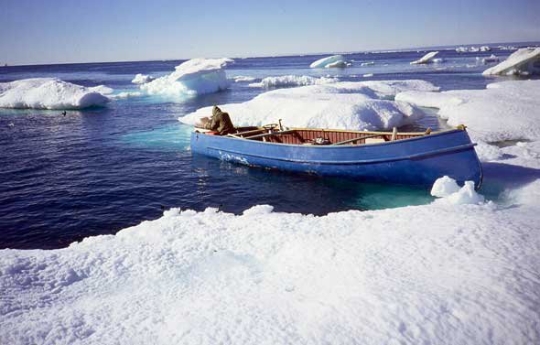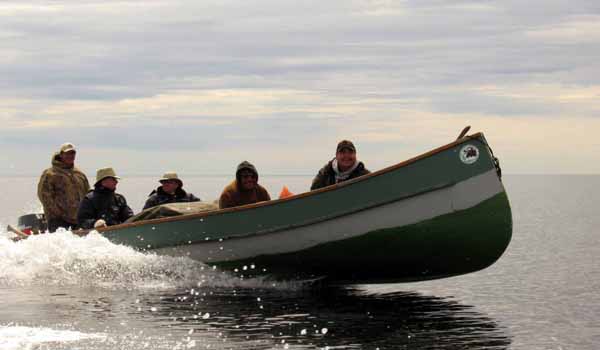
Like the rest of this community also involved with The Canadian Canoe Museum, I share a peculiar affection for the little human-powered boats that are so celebrated in our country’s heritage. It is certainly my privilege as the Museum’s Curator to spend quite a bit of time with its collection of over 600 of these little boats.
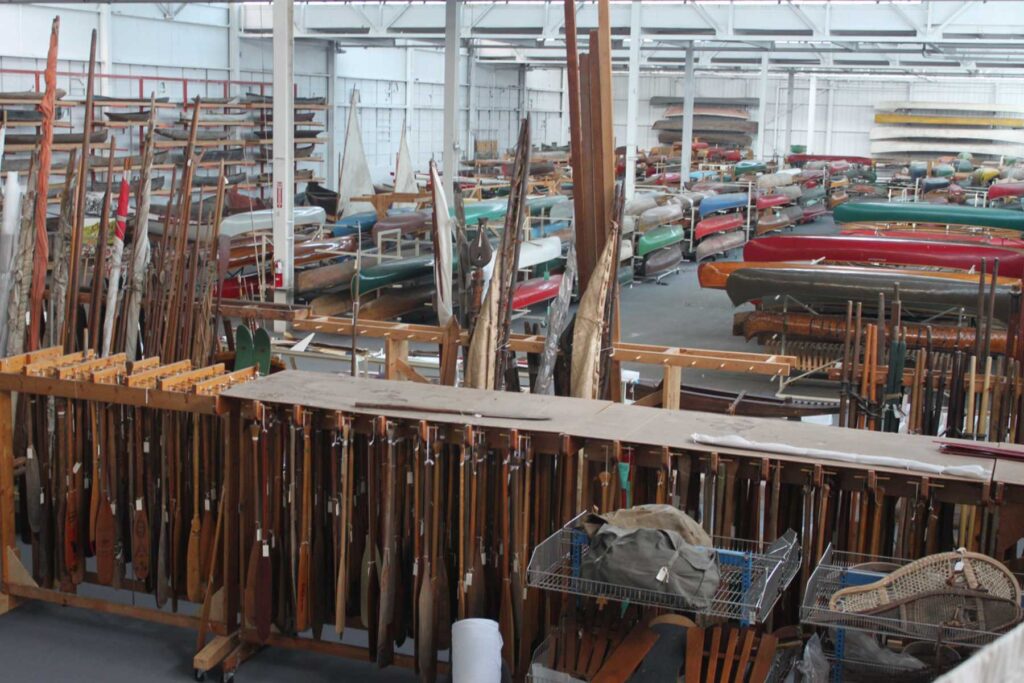
If pressed, I do not have a favourite canoe– at least today’s choice would not be the same as yesterday’s favourite. I will however make a small confession: I’ve long had a soft spot for one unusual branch in the canoe’s family tree and it usually has an outboard motor hanging off the end. Now I’m not really a motorboat person, not at all, but there’s something about the shape and workboat finish of the great freighter canoes found across the Canadian north that gives me a thrill.
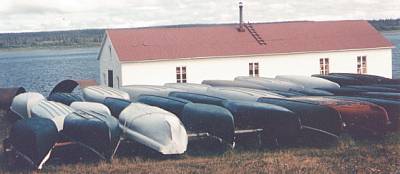
For a history of these large, square-backed wood and canvas canoes, a meandering link can perhaps be made to the large birchbark canoes paddled by voyageurs of the fur trade. This link is further strengthened by the fact that, in the mid-20th century, a Cree outfit called Rupert House Canoes was making these big freighters in the same community on James Bay (now called Waskaganish) where the Hudson’s Bay Company first set up shop 300 years earlier.
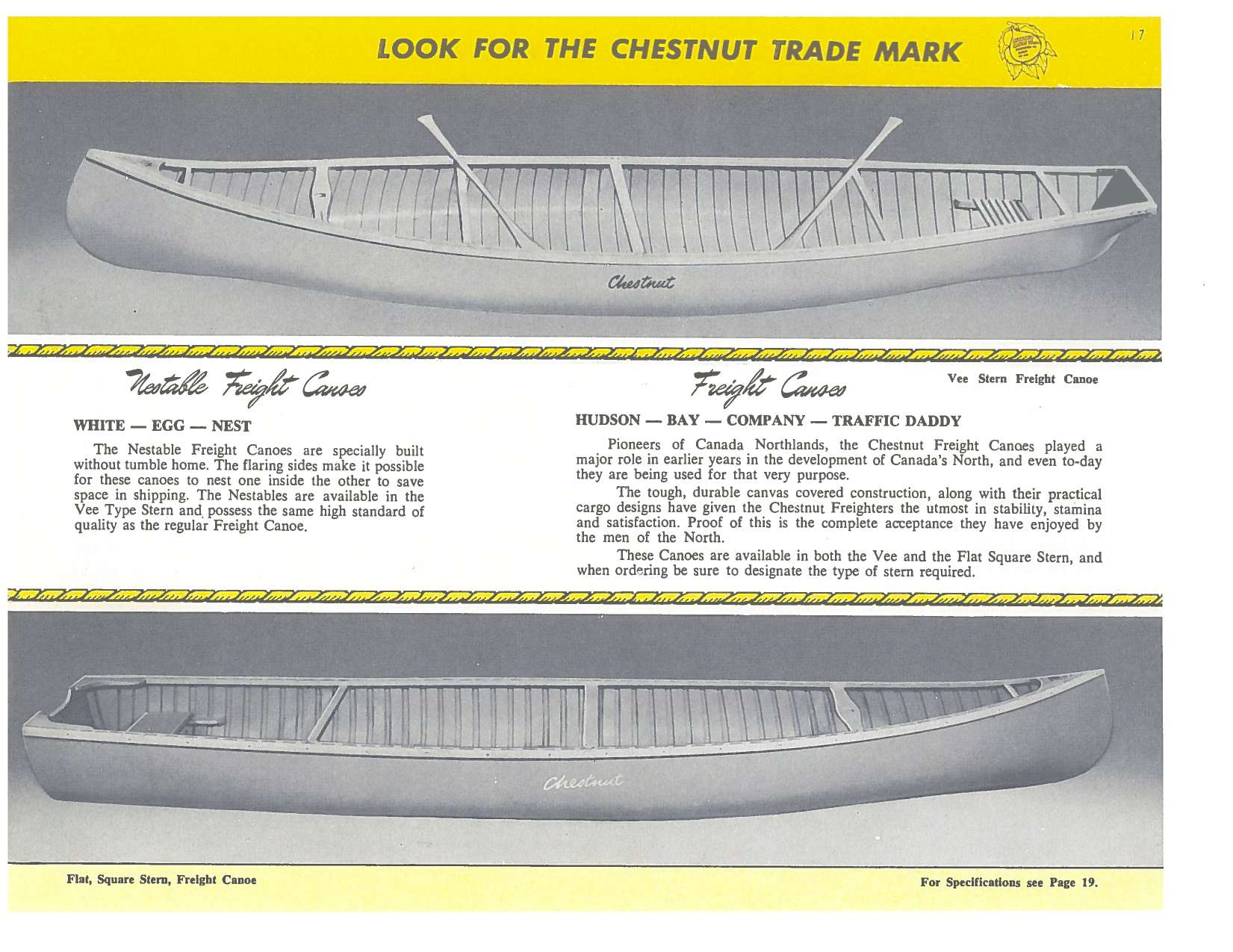
Of the larger Canadian manufacturers, sister companies Peterborough, Chestnut and Canadian Canoe Companies all produced identical versions of the larger volume canoes, which first appeared as double-ended hulls. Later offerings included a Y-stern hybrid format suitable for river use by paddle and motor and the square-back option for open water travel by outboard motor. It is also worth mentioning that these canoes would often carry Johnson or Evinrude motors manufactured by OMC right in the buildings currently occupied by The Canadian Canoe Museum. These canoe offerings ranged up to 22-foot in length and measured 60” wide. Our collection has 26 historic canoe builder’s forms including the 22’ freighter (model name: “Daddy”) from the Chestnut factory. Given its size, it is not surprising that the forward half of this huge form was designed to receive either the Y-stern or the square-back tail section for ease of storage.
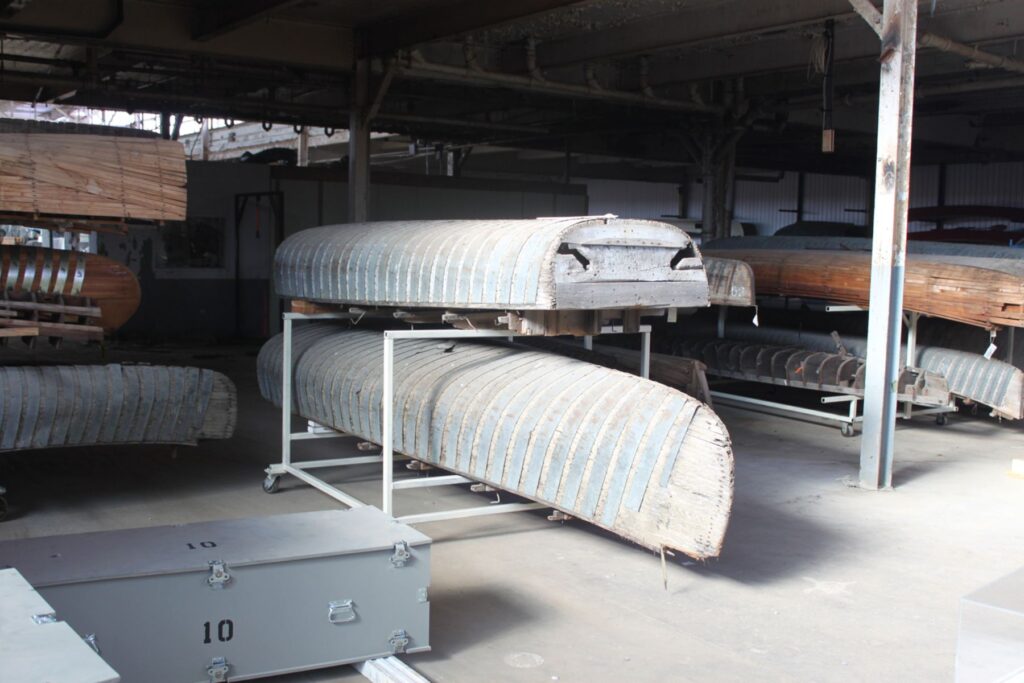
There is a much more significant story to be found however in the community of Prévost, Quebec. Almost all of the freighter canoes in use in the north show the familiar circular decal with moose head of the company “Canots Nor-West/ Nor-West Canoes”. With family roots that connect him to the Hudson’s Bay Company in western Canada, Augustin Gariepy began in producing canoes around 1945. What would become an astonishingly durable family business is still manufacturing canvas-covered canoes today and Nor-West continues to produce an impressive range of boats measuring from 12 to 26 feet in length. This is even more impressive when one considers that they are carrying on, now in the hands of Gariepy’s grandsons, many decades after all of the larger wooden canoe manufacturers have disappeared. I wish them all success in the future.
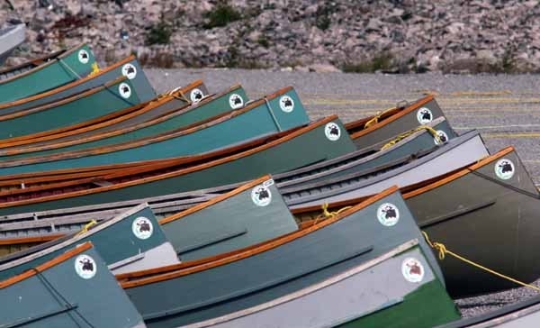
Surprisingly, our collection does not yet have a “Nor-West” canoe in our collection but I have no doubt that we’ll amend that at some point. Given that there are still so many to be found, it would also be our choice to acquire an example of this northern workhorse still associated with its particular history and use.
